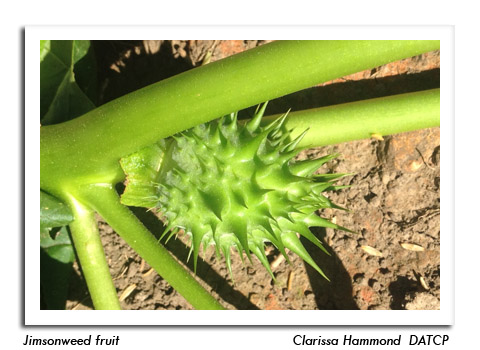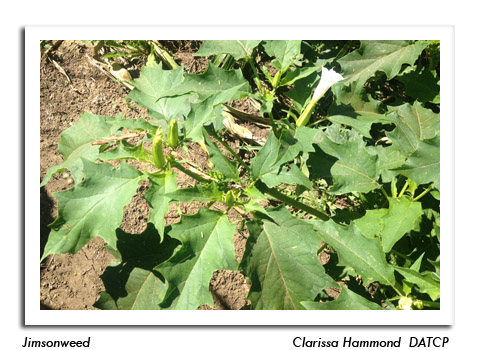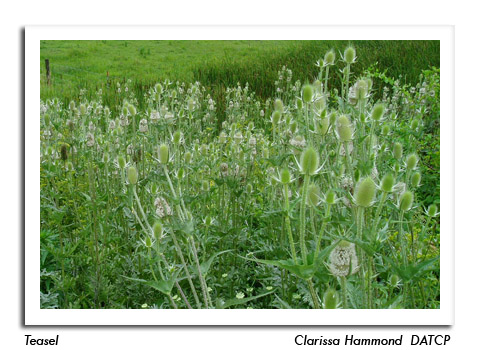
 |
|
|
Weeds
Volume 57 Number 17 Date 08/09/2012 JIMSONWEED - This summer annual, with large, prickly seed capsules and conspicuous whitish-purple, trumpet-shaped flowers, was noted in an Iowa County field on August 6. Jimsonweed is toxic to both animals and humans when ingested, and although cattle generally avoid it in pasture settings, their selectivity decreases with the shortage of suitable food resources in drought years. The risk of consumption also increases as weedy, less desirable fields are harvested to meet increased demand for hay. Livestock poisoning can occur when less than 5% of the feed is composed of jimsonweed. Further information on avoiding this and other poisonous weeds when purchasing supplemental hay is available in the July 26 issue of the Wisconsin Crop Manager. WILD PARSNIP - Seeds are rapidly maturing on plants throughout the state and mowing as a form of control is no longer recommended. This invasive species is now one of the most prevalent weeds in roadside ditches in the southern two-thirds of the state. TEASEL - Plants in southern Wisconsin are predominantly in the flowering and seed development stages. Control of this restricted invasive weed is best achieved by herbicides directed against the rosette stage in spring or fall, or by physically removing the plant and taproot. Any control measure must be repeated for several years in a row to eradicate the plants. Mowing is also an option early in the season, but should be avoided at this time of year when mature seeds are present. --Clarissa Hammond, DATCP Weed Scientist 



|
|
|